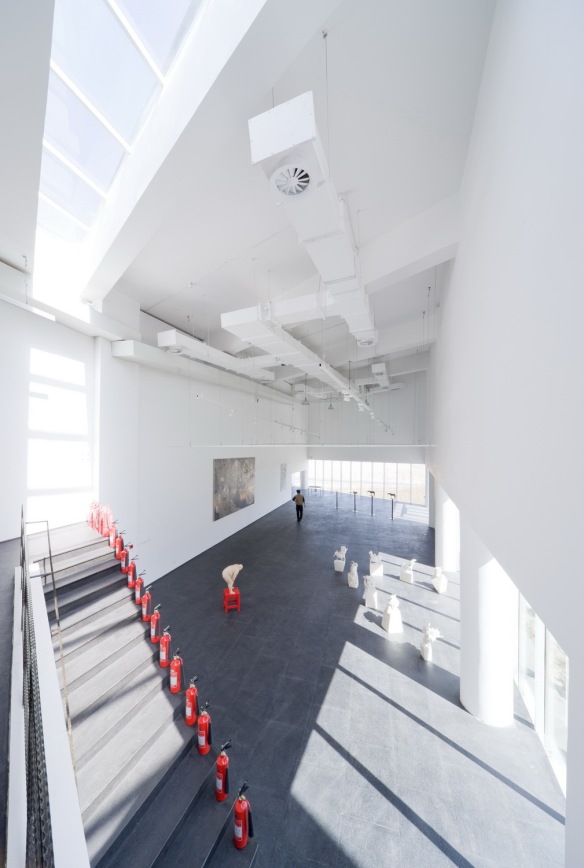 Image: http://www.zhulong.com
Image: http://www.zhulong.com
Ordos Art Museum is located at the cultural centre of Ordos, a city founded in 2001 in Inner Mongolia. Designed by DnA, the museum houses a public exhibition space and a private research institution.
Image: http://www.chinese-architects.com
In the design of the gallery, much attention was given to integrate the building with the prairie landscape of Ordos.
Image: http://www.chinese-architects.com
In the design process, a continuous, linear route traced on the landscape constituted the basis of the eventual building form.
Image: http://www.zhulong.com
From the entrance, the visitor proceeds up the natural terrain of the dune’s slope, before descending back onto the ground floor. The end of the route also marks the conclusion of the public exhibition space, and the beginning of the private research institution.
Image: http://www.chinese-architects.com
The interior spaces vary in height, width and length according to the terrain.
Image: http://www.zhulong.com
Full height glazing brings the landscape into the interior spaces, while semi-enclosed courtyard spaces
 Image: http://www.zhulong.com
Image: http://www.zhulong.com
 Image: http://www.zhulong.com
Image: http://www.zhulong.com
 Image: http://www.zhulong.com
Image: http://www.zhulong.com
 Image: http://www.zhulong.com
Image: http://www.zhulong.com
 Image: http://www.zhulong.com
Image: http://www.zhulong.com
 Image: http://www.zhulong.com
Image: http://www.zhulong.com
 Image: http://www.zhulong.com
Image: http://www.zhulong.com
DnA_Design and Architecture is a Beijing-based architecture firm headed by Xu Tiantian.
Reference: Zhulong


















